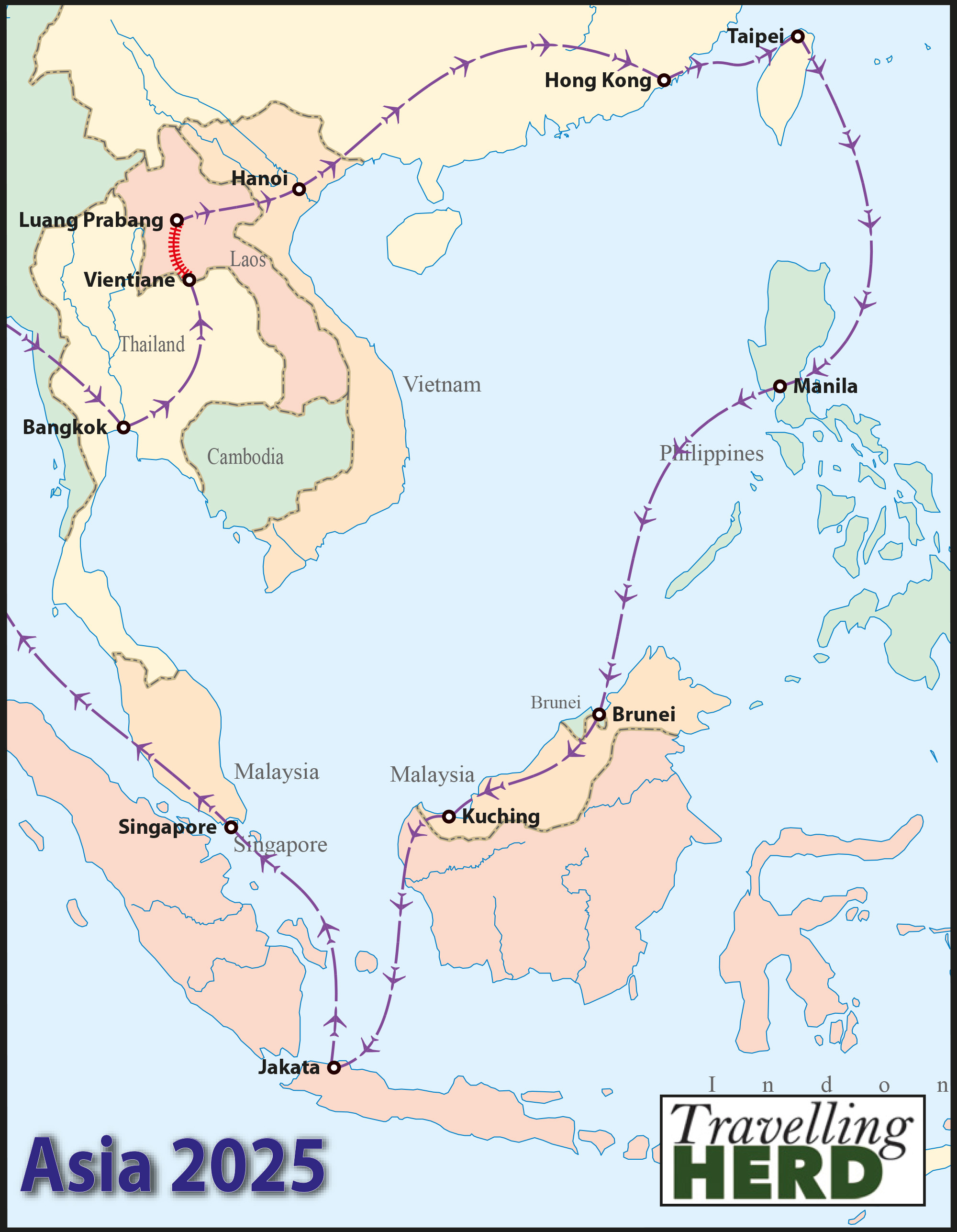Read this blog: The one where Matilda has her aerosols inspected
Monday 17th and Tuesday 18th February 2025
Thinking it would be easiest to give our hotel as a pick up point for InDrive, we went to the branch of Starbucks which is directly in front of the Holiday Inn for a coffee and a snack before organising transport to the COPE Visitor Centre. However, many of the streets in Vientiane are one way and it took a little time for our InDrive driver to negotiate the traffic and the one way system to be able to pick us up. From there on the journey to COPE was straightforward.
The visitor centre is located in the grounds of the Centre for Medical Rehabilitation [CMR]. COPE stands for the Cooperative Orthotic & Prosthetic Enterprise and is the main provider of artificial limbs, walking aids and wheelchairs in Laos. Although many of those in need of a prosthetic are bomb blast victims, COPE also treats the victims of road traffic or other accidents and people with congenital conditions.
Outside the building stands a striking sculpture made out of metal retrieved from bombs dropped by American forces. It almost seems as though the figures are running to call and warn visitors about the danger of unexploded ordinance.
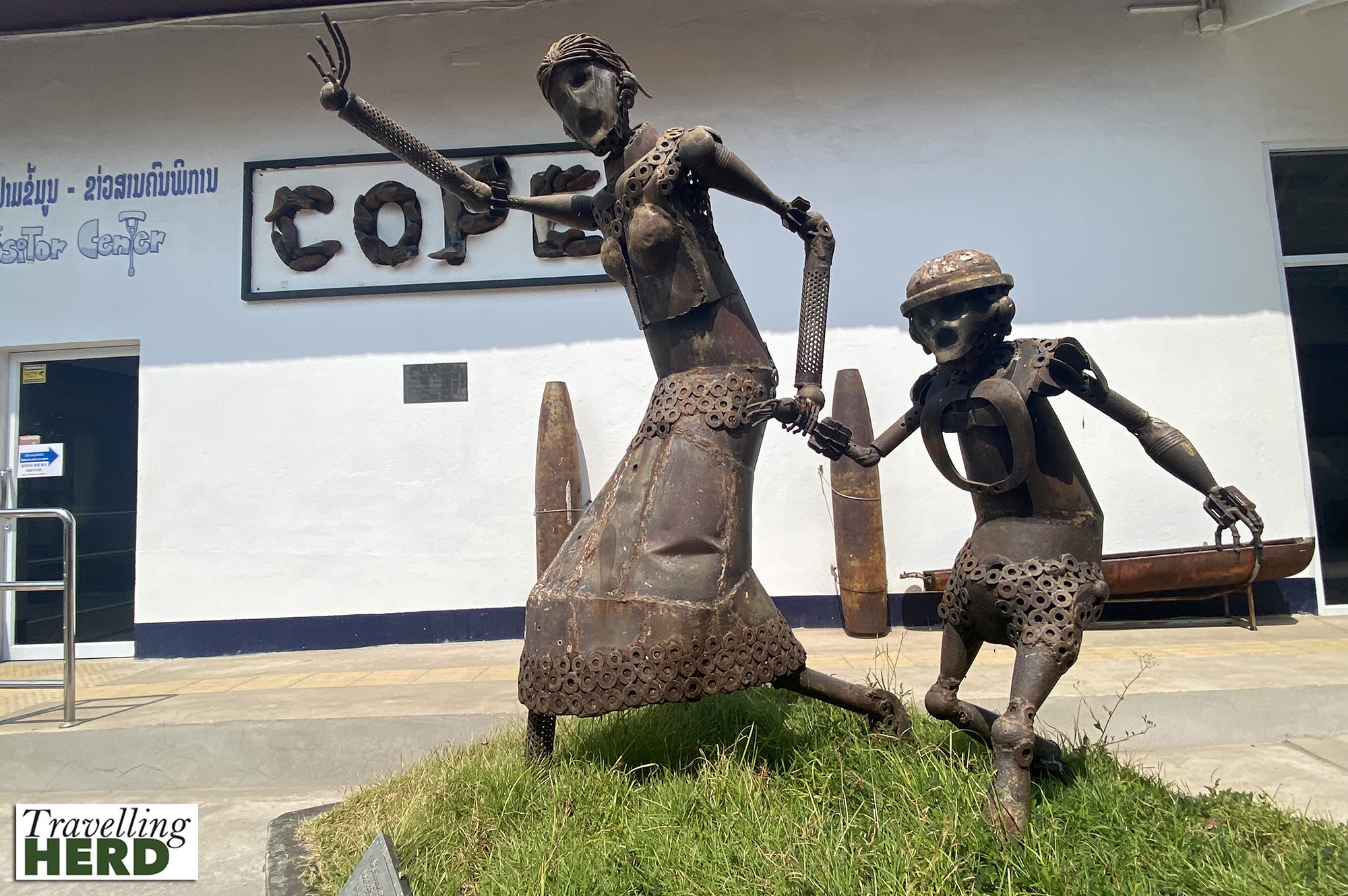
Entry to the COPE Visitor Centre is free: people are simply encouraged to make a donation or buy some merchandise to support the invaluable work of this organisation. As you enter there is a rack with cards which tell you what different amounts could fund: for example US$75 will buy a prosthetic limb for someone.
A sign at the start of the museum states that Laos is “the most heavily bombed country per capita in history.” Another one informs visitors that “from 1964 to 1973, the U.S. dropped over two million tons of ordnance over Lao PDR in 580,000 bombing missions – the equivalent of one planeload every 8 minutes, every hour of every day, for 9 years.”
The American forces used cluster bombs comprising a large outer case containing up to 680 individual bombs, known in Laos as bombies – see feature photo and below. Each bombie has a killing radius of 30m.
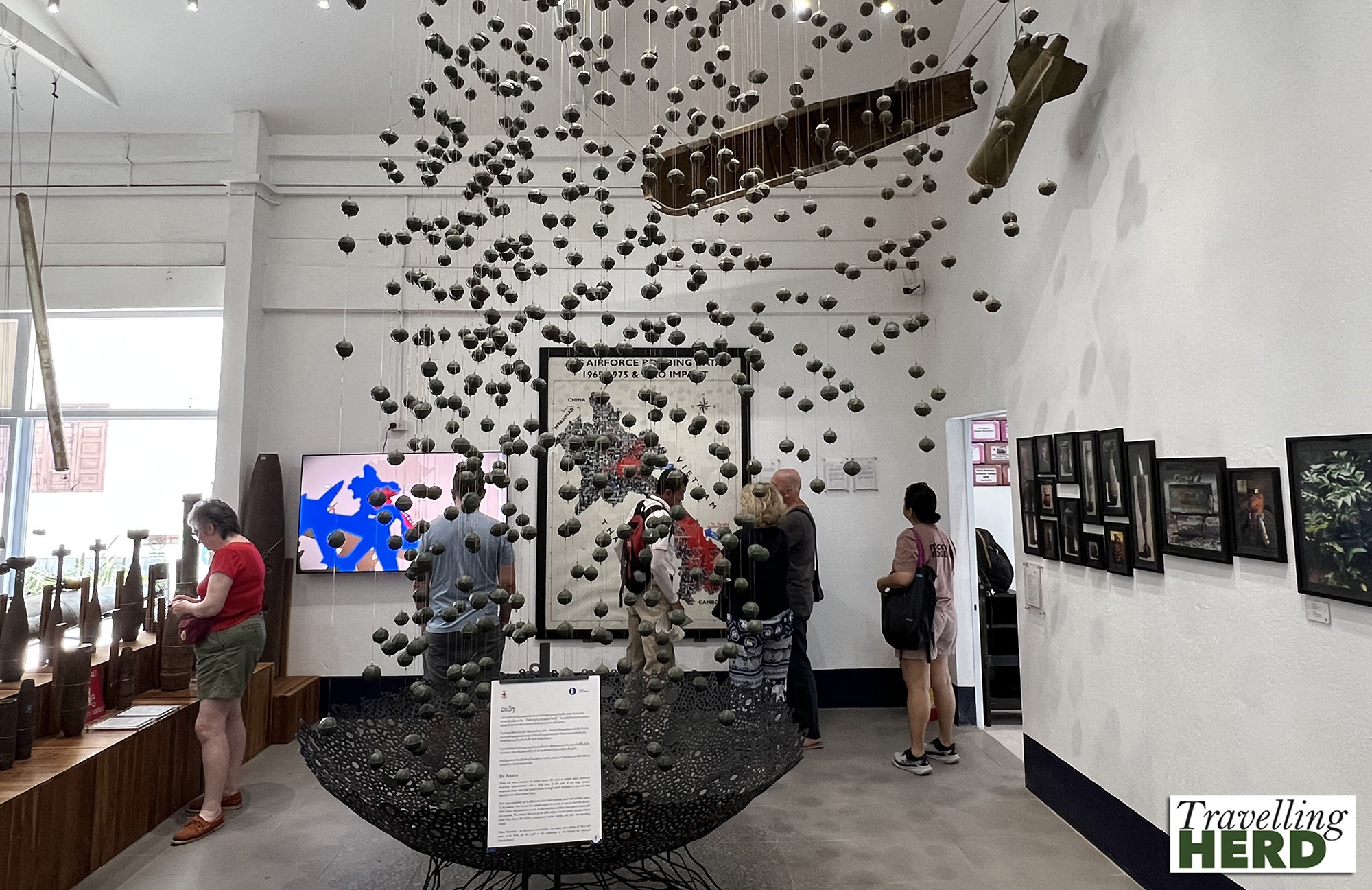
At least 270 million cluster bombies were dropped. With between 10 and 30% of these failing to detonate, an estimated 80 million pieces of UXO (unexploded ordinance) remains contaminating the land and posing a real hazard for the people of Laos.
There is a cinema showing a range of films which you need to ask the staff to screen while displays around the walls tell the stories, always heartbreaking and often uplifting of people who have needed the services of COPE. The prosthetics on display which have been fashioned in remote rural places demonstrate a real sense of ingenuity.
We would recommend a visit to COPE.
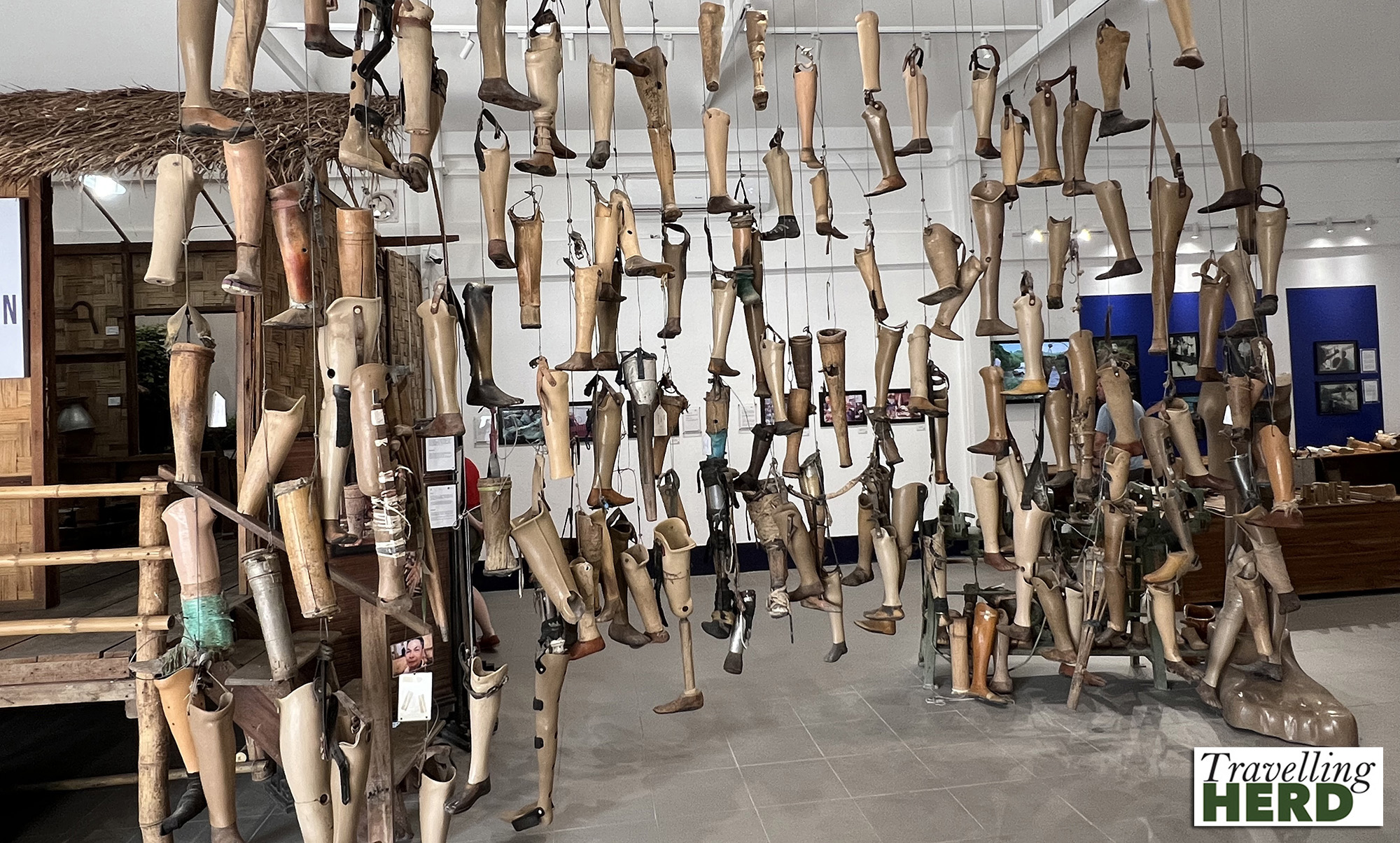
Feeling humbled by the stories at COPE of human determination and resilience in the face of tragedy, from here we set off to walk back towards the centre of Vientiane. The route took us past the Naga Mall and we took the chance to stroll through to enjoy the cool of the air conditioning. Naga Mall is a homage to consumerism: unfortunately the homage is a little lacklustre at the moment as the top two floors are still vacant and it looks as though it will be some time before the complex is at full occupancy.
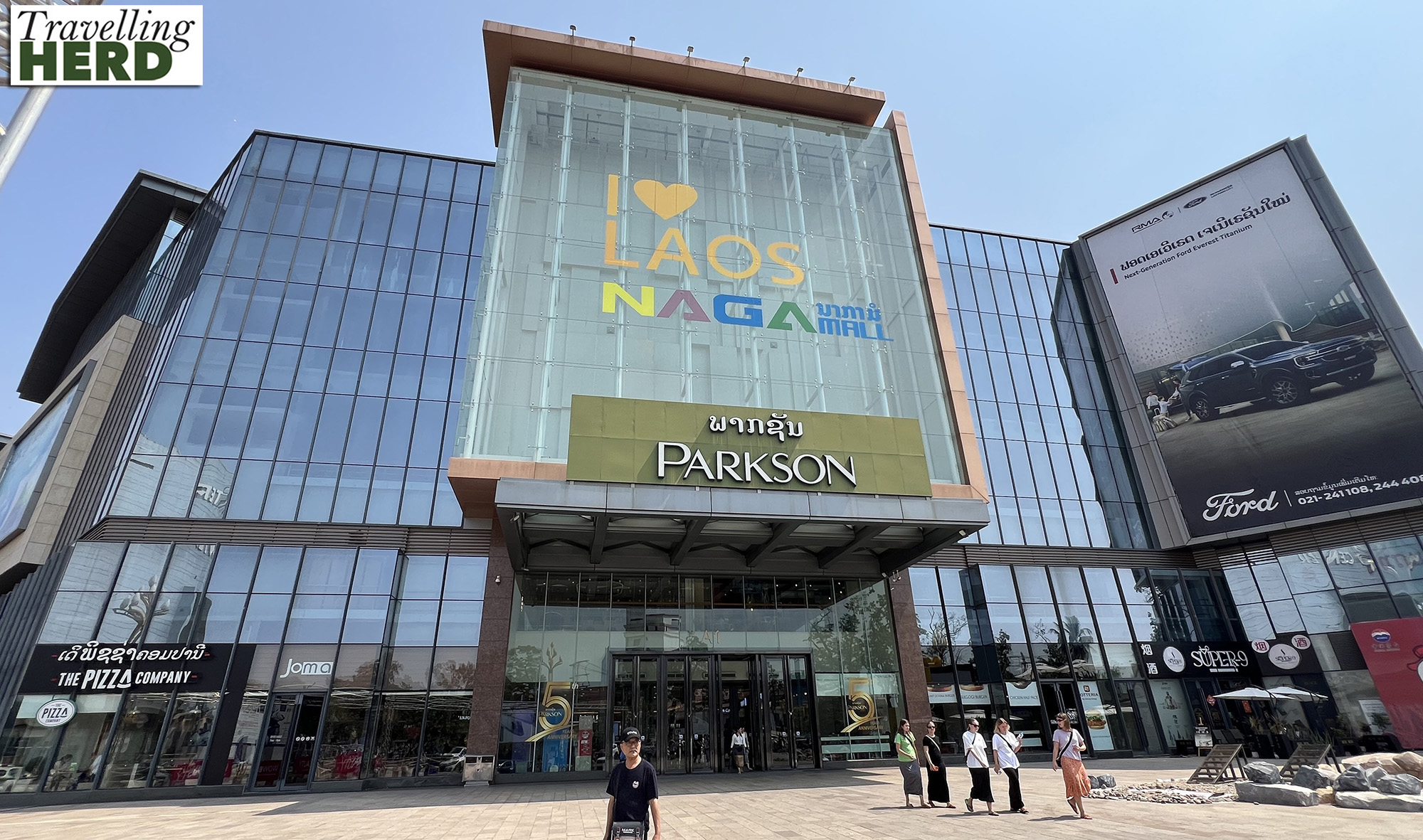
We dropped in to The Living Library for a cold drink as Matilda thought it looked pleasant. The prices reflected the calm of the garden and the old colonial setting and whilst we enjoyed the ambience, we decided against eating here later.
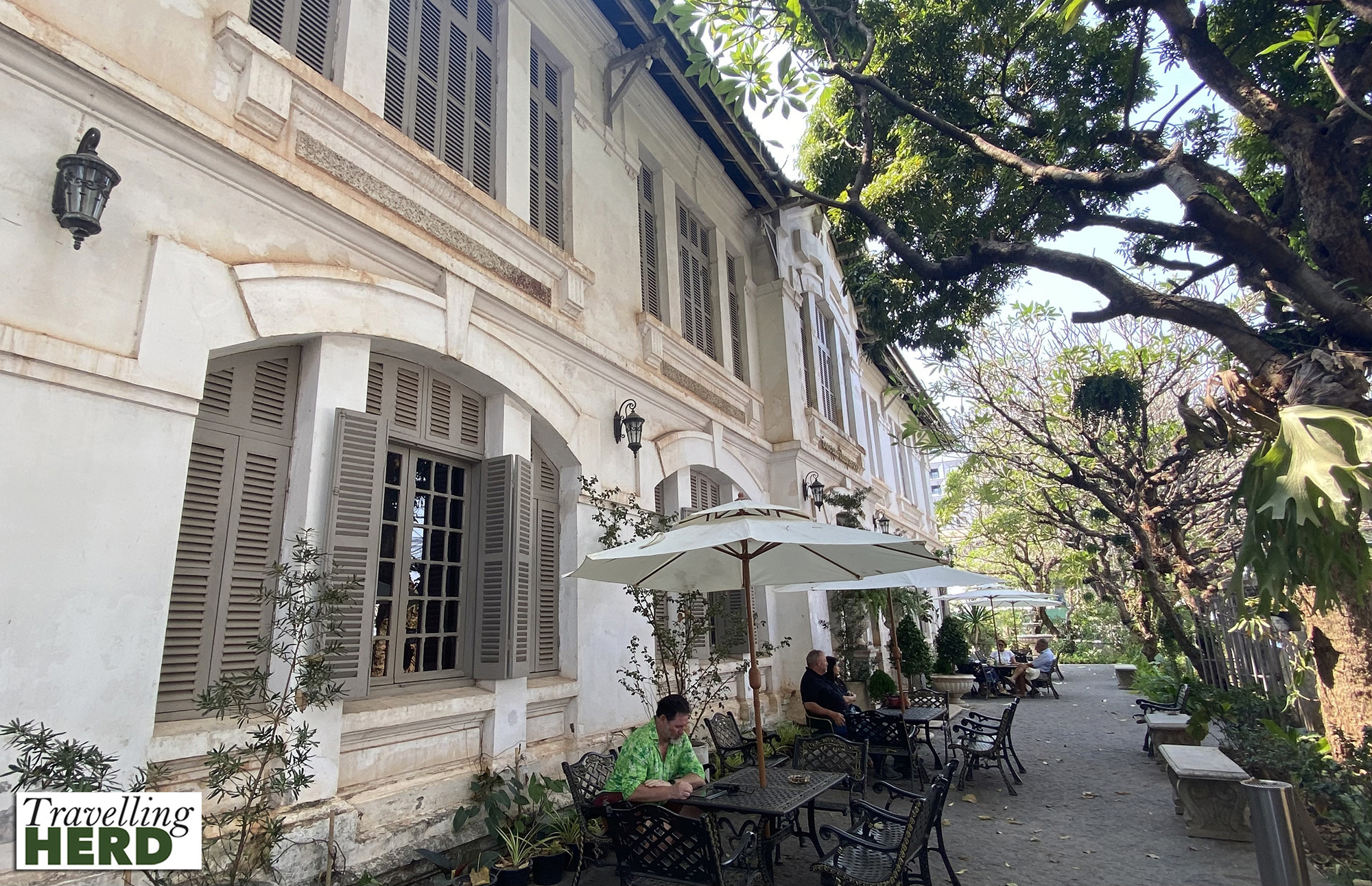
We knew we would need an early night as we had a train to catch in the morning – the first and only one of this tour. So, having spent some time in and by the pool we went to the Khop Chai Deu Bar so Matilda could enjoy a glass of draft Hoegaarden and we could eat something a little more akin to the local cuisine [see Dish of the day].
The hotel quoted us US$50 for transport to the railway station. We knew that the InDrive price would be a fraction of that so we organised our own transfer.
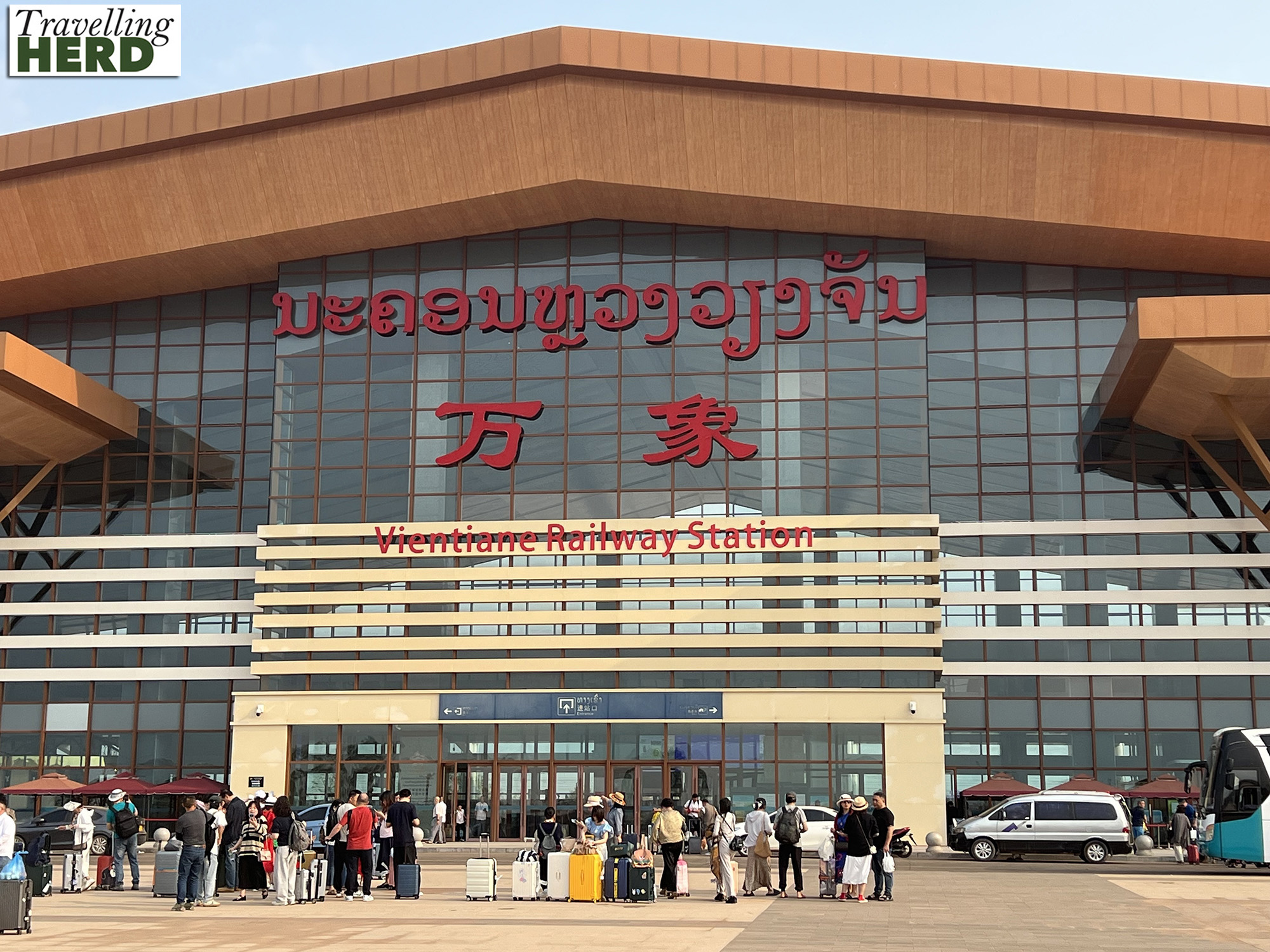
The station building is about 15km from the centre of the city and is simply vast, particularly considering there were only two trains showing on the departure board while we were there.
Security at Vientiane Station is similar to that at an airport: both people and luggage have to pass through scanners before travelling on the Laos-China Railway. Matilda was surprised to be pulled over and asked to open her suitcase. It transpired that because she had aerosol sprays in her luggage, the security guard needed to check the volume of each one. Fortunately she had only packed travel sizes to limit the weight but a sign taped to the table she opened her case on stated: “Oversized flammable spray is not allowed on the train (120ml)”.
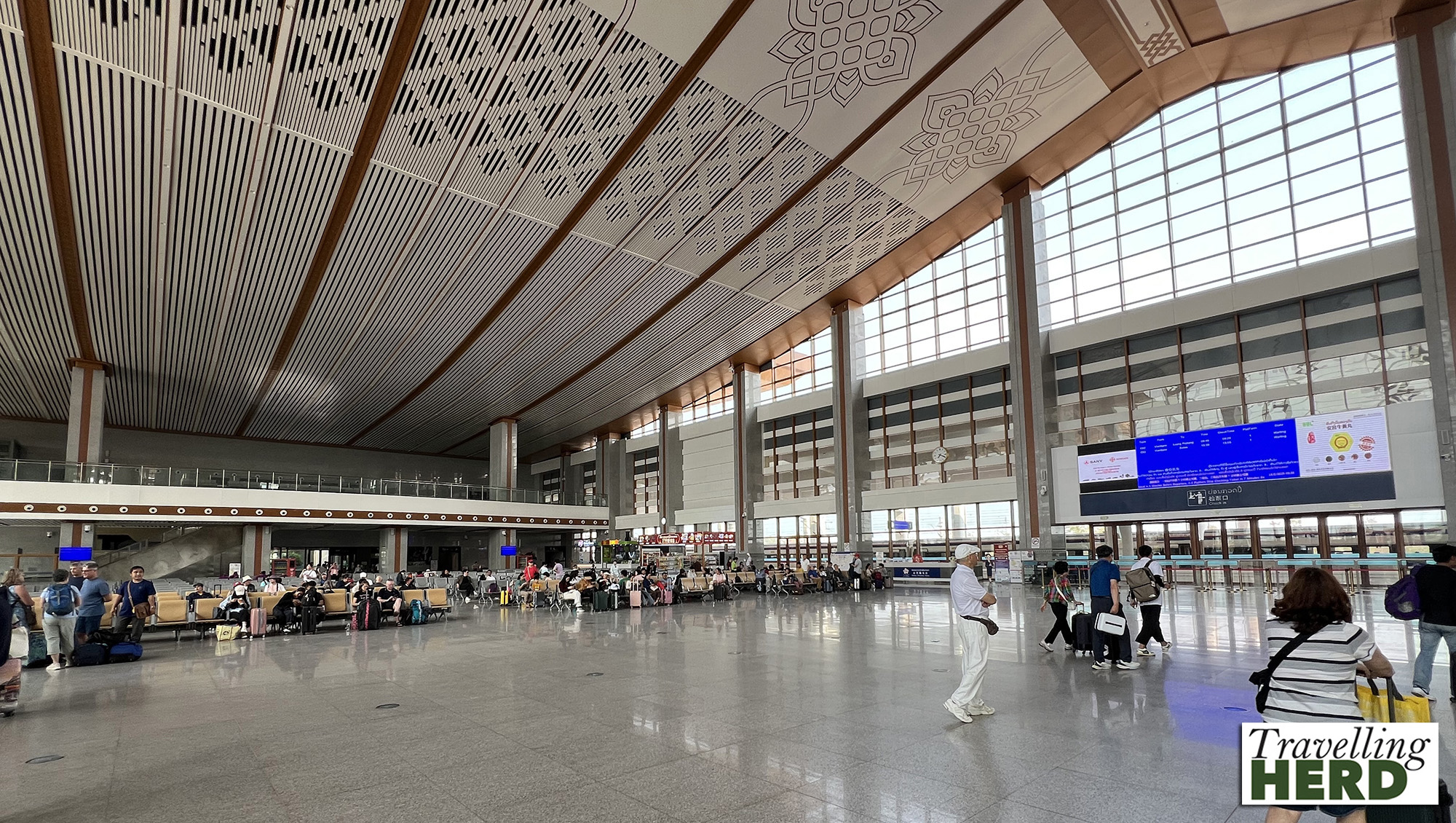
As is his usual practice, Robert strolled to the front of the engine to take a photo. Apparently in a strange form of precedence, passengers are not allowed in front of the train.
We found the allocation of seats was rather random. We were given seats 5C and 5D in the first class carriage. With four seats to each row, and neither seat B nor seat E in existence, we were either side of the aisle. Robert was next to a charming German gentleman who offered to swap seats so we could sit together [see Selfie of the day]. But the German had also been allocated a seat some distance away from his travelling companion. The carriage was not full so the system was a mystery.
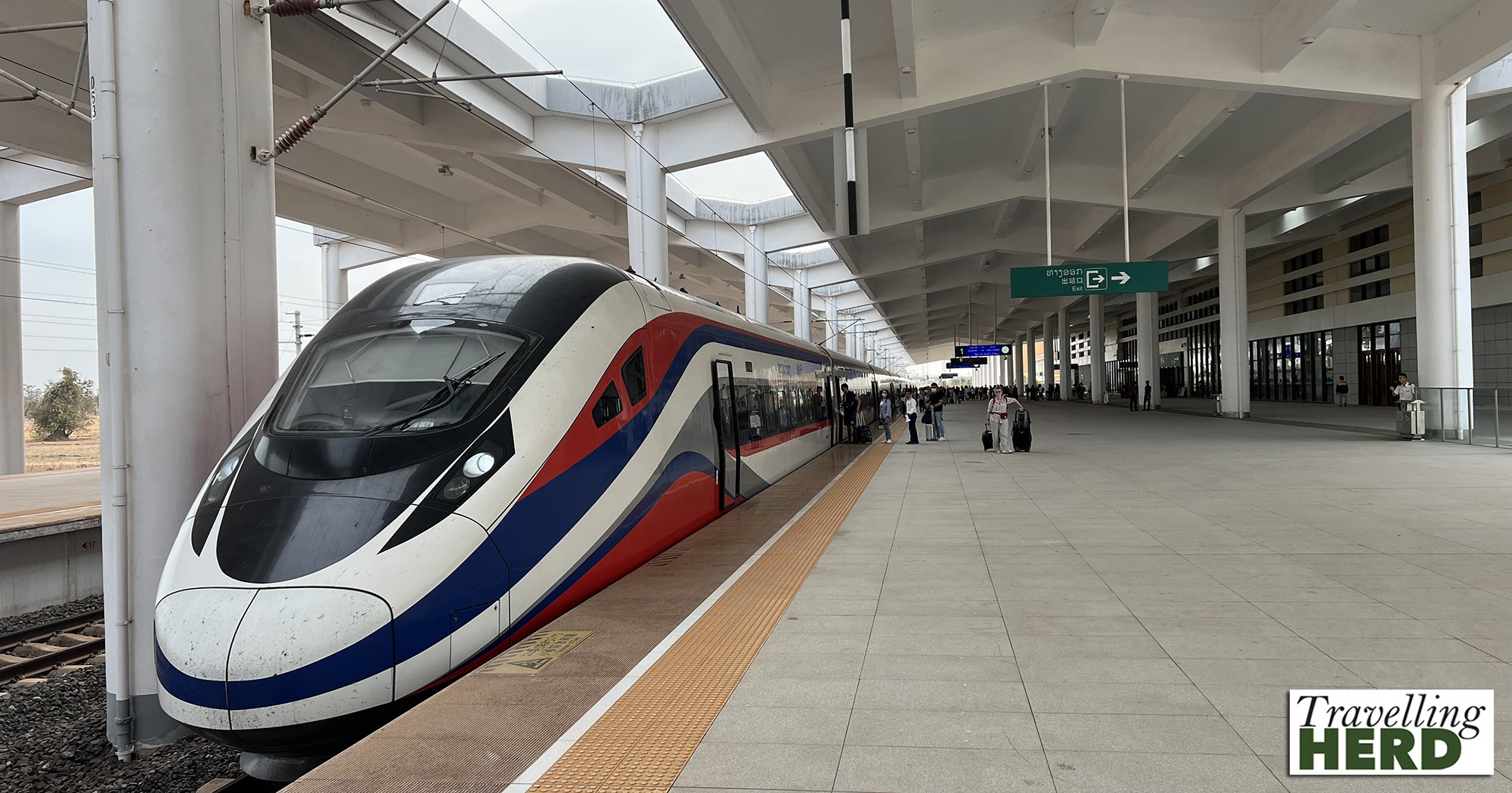
The Laos-China Railway is a new route developed and paid for by the Chinese government which effectively goes from Bangkok in the south, up through Thailand, through Laos and on into China to Kunming. In theory the Chinese built the railway to encourage Chinese people to travel abroad, but also as a major export hub for their goods: a bit like a modern version of the Silk Road into Europe. The section in Laos was completed in 2021.
Train tickets are only made available from three days before the date of travel so in order to book you need to commission an Asian agent to acquire the tickets for you. It’s become very popular very quickly and sells out almost immediately, so if you can’t buy the tickets in those three days, then you will not be able to travel. Robert uses a travel agent called 12Go.asia and pre-pays for the tickets months in advance with a UK credit card. The 12Go.asia agent will book when the seats are released and email the tickets through to us, for our convenience.
The track seems to have been laid in almost a completely straight line heading north regardless of the terrain. The train travels at about 100 mph and for a period of time we were only granted glimpses of mountains between the tunnels [see Video of the day].
One of the usual benefits of train travel is that you arrive in the centre of the city you are visiting. However, Luang Prabang Station is about 13km out so [like Vientiane] quite a way from the centre. Whether by accident or design or because of the distance from civilisation, neither of us had a signal to arrange an InDrive but there is a similar system at Luang Prabang Station to the one we encountered at the airport at Vientiane. The standard rates are public and hopeful drivers hold up signs: 40,000 Kip will pay for one person to travel in a shared vehicle into town. For 300,000 Kip you can pay for your own dedicated transport and travel door to door. As this is only just over £10, we opted for our own individual comfort.
Once in Luang Prabang we went in search of a cashpoint machine. There are plenty of these and many of them look like small wooden huts.
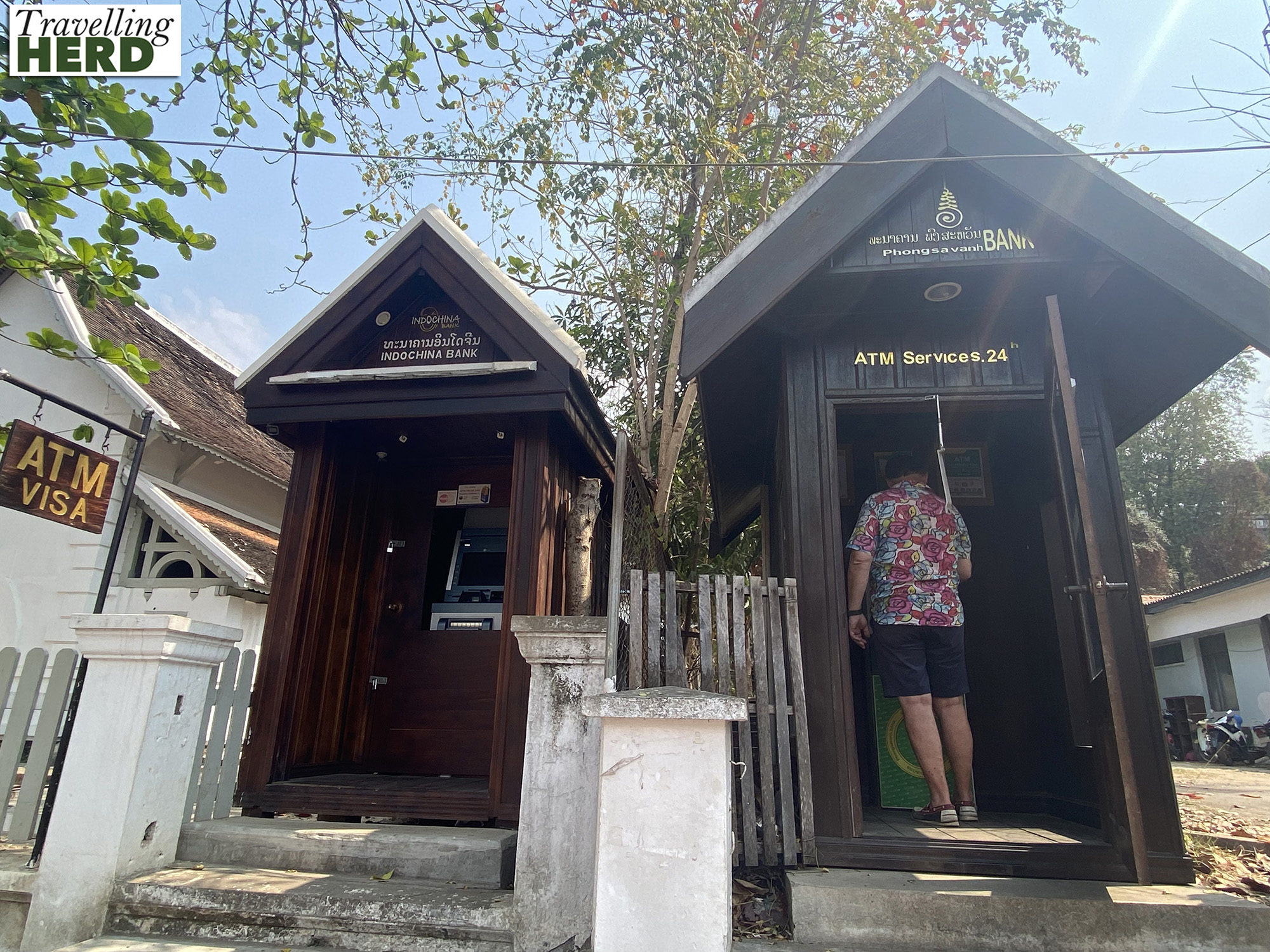
Robert is firmly of the belief that travelling is thirsty work but as it was 31º Matilda concurred. Robert was delighted to discover Kassel Red on draft. It seems strange to find draft Belgian Beer for a fraction of the price you pay in the country of its origin.
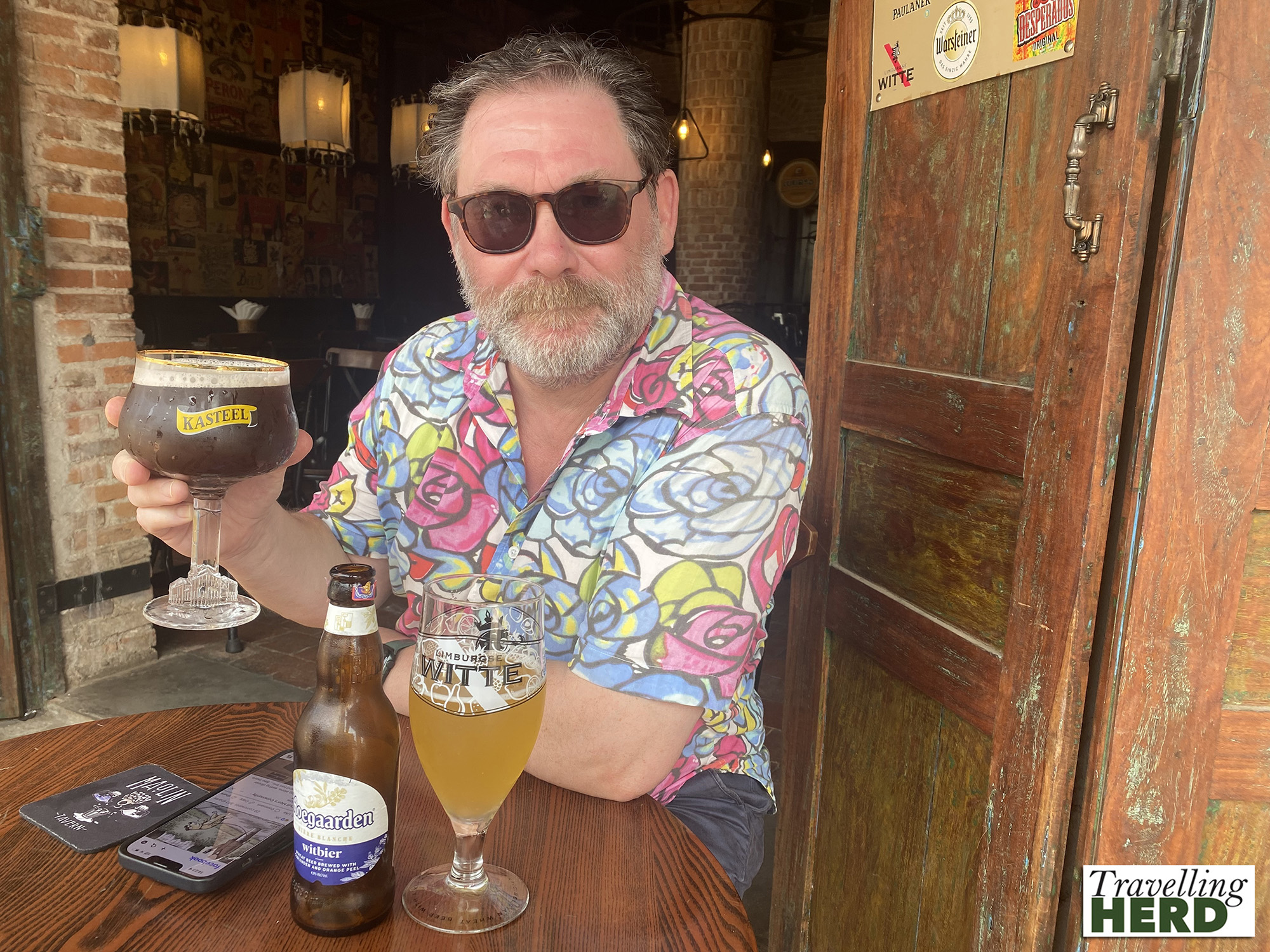
Matilda also demanded a little sustenance and the olives in particular were very tasty.
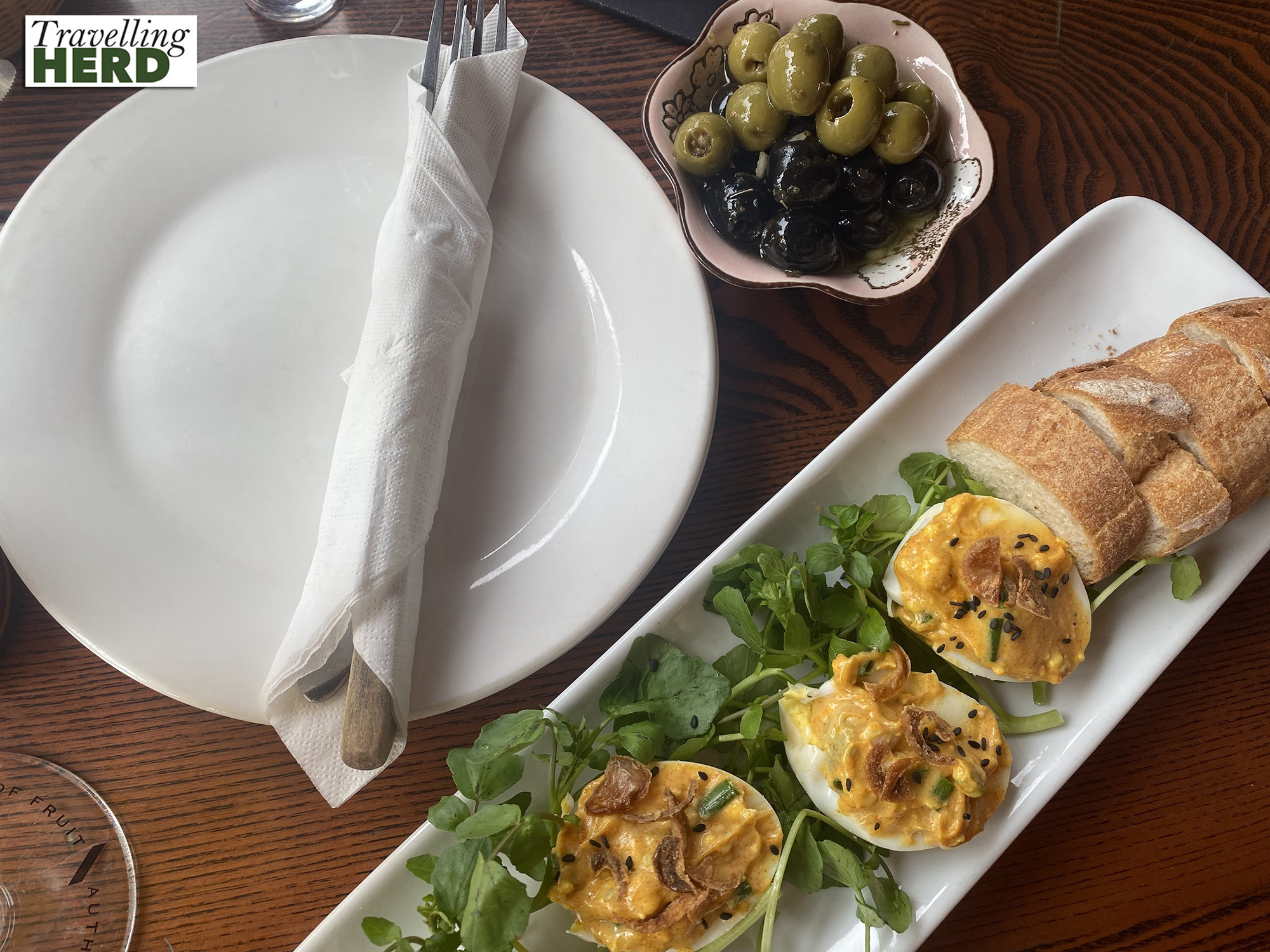
After darkness fell, fortified by ale and snacks on Sisavangvong Street we went to explore the Night Market on our way back to bed.
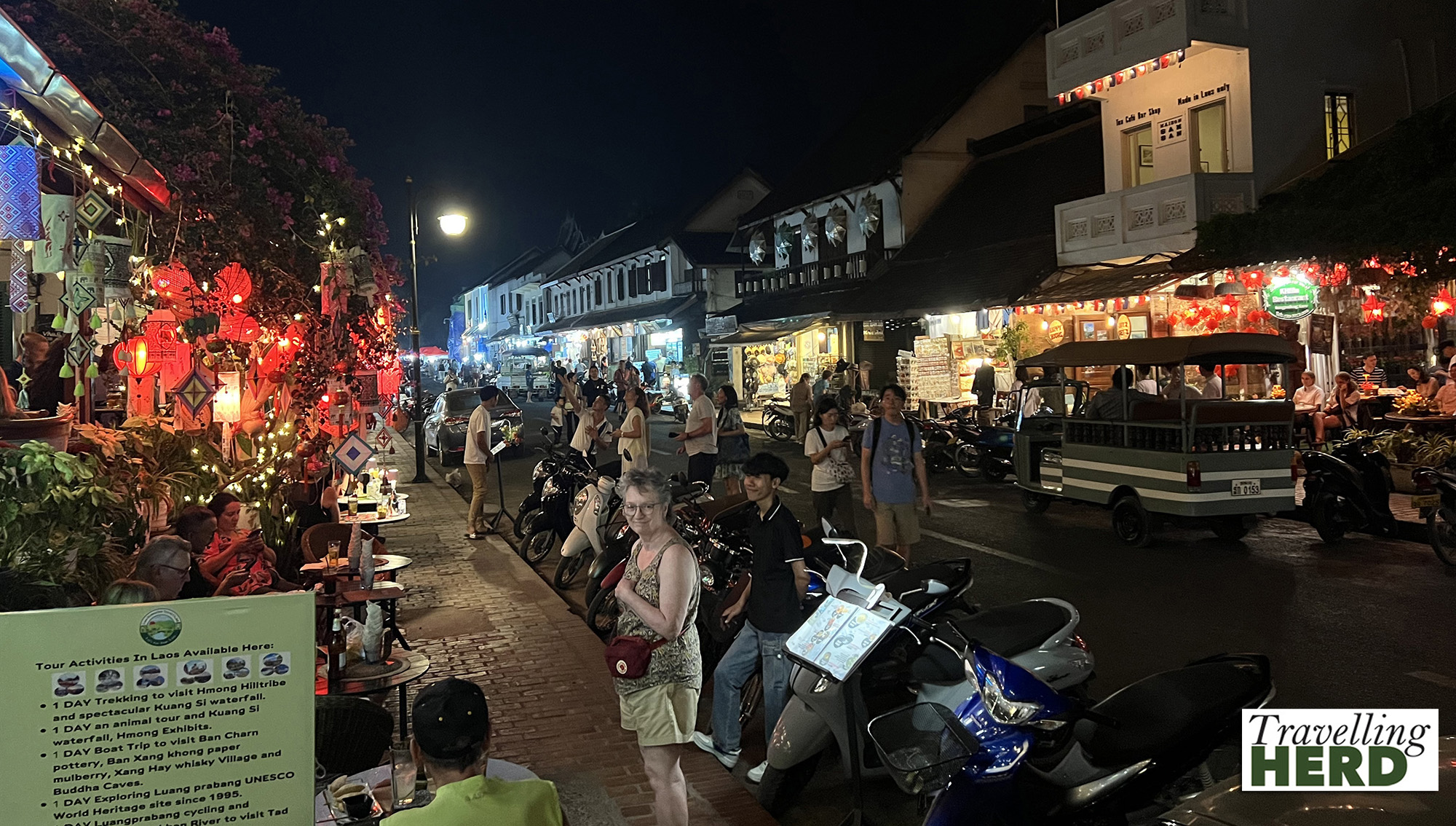
The Night Market runs from about 18:00.
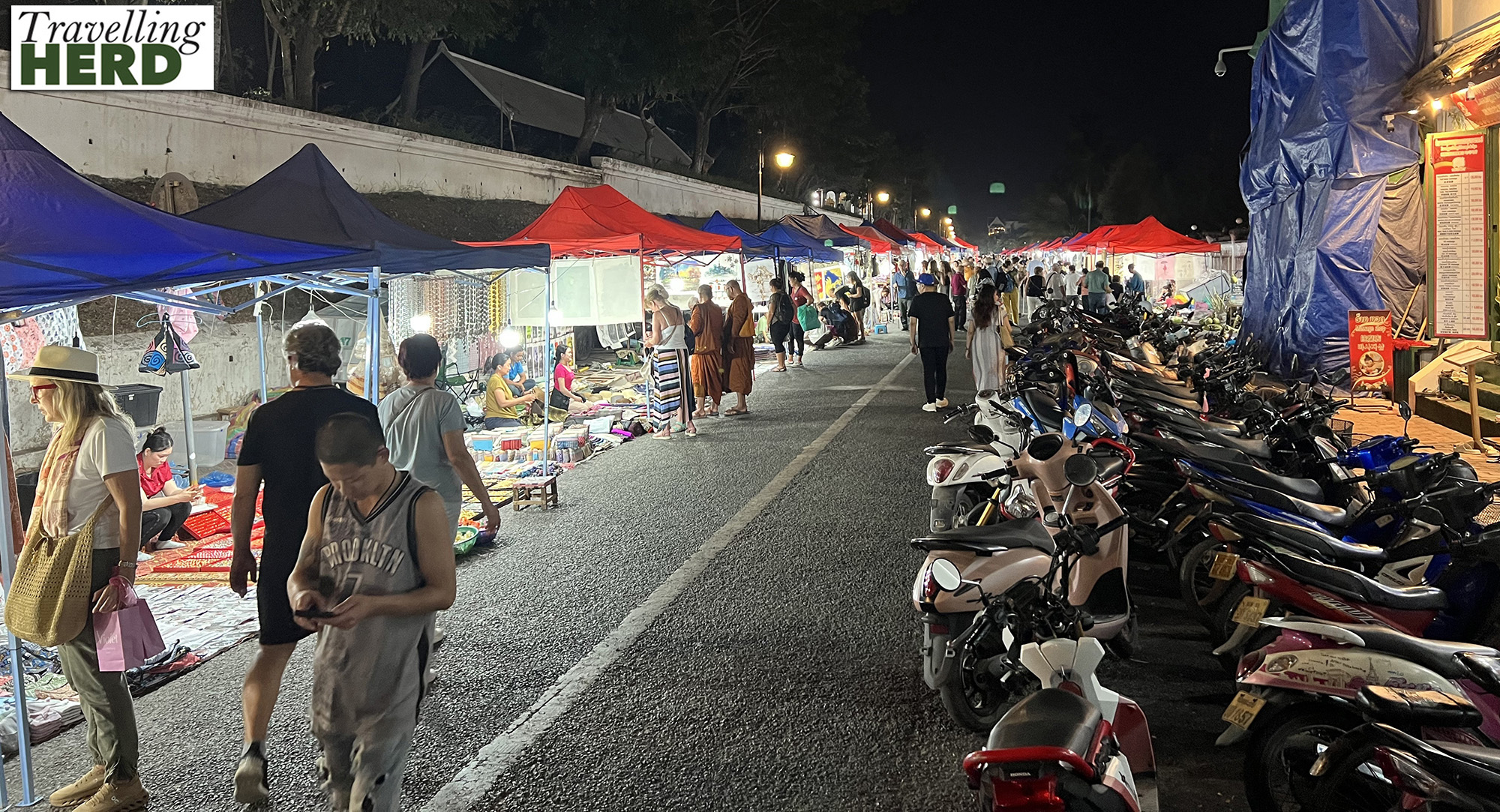
Stall holders set out their wares every night but we did not see many people actually spending money.

Video of the day:
Selfie of the day:
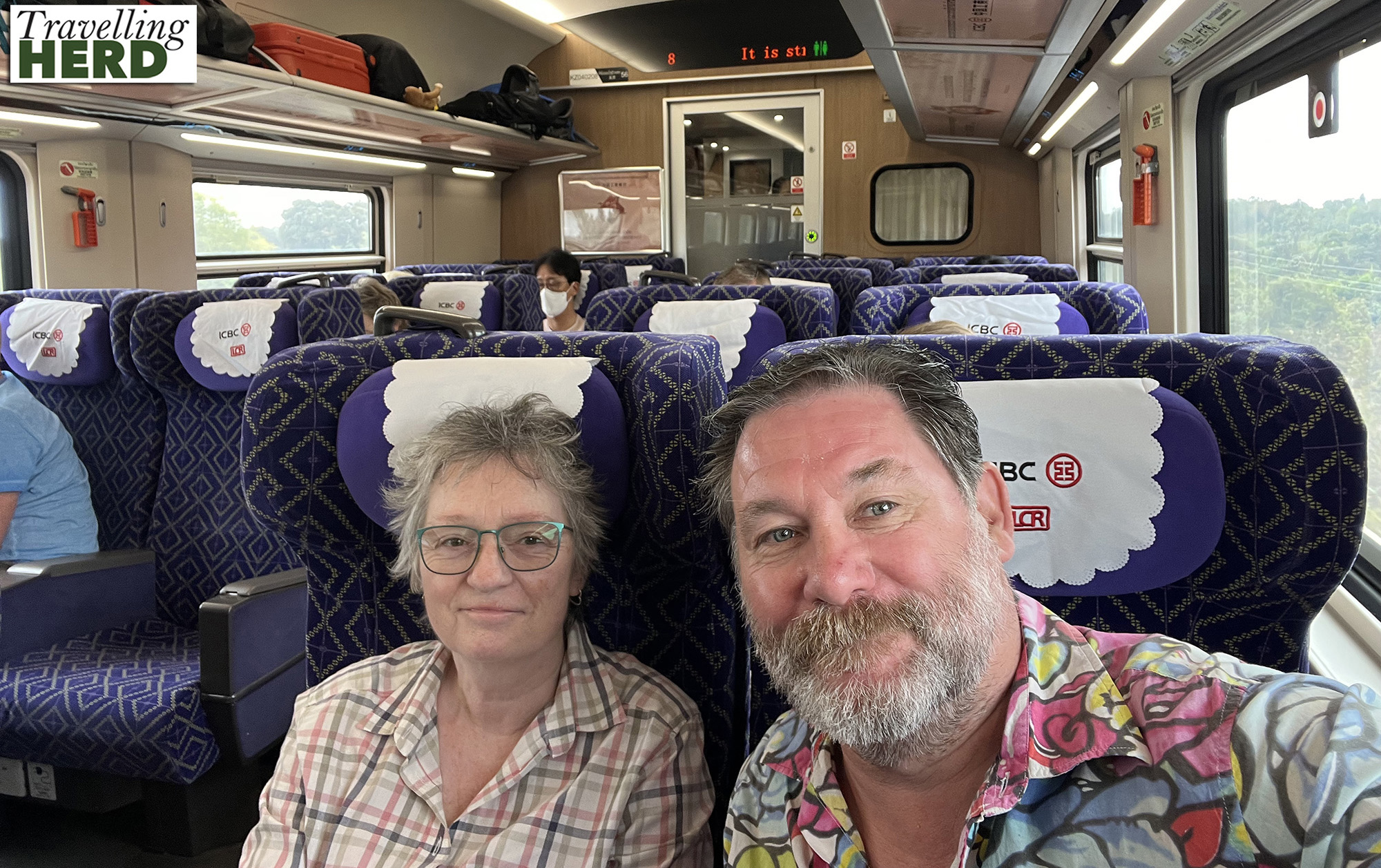
Dish of the day:

Route Map:
